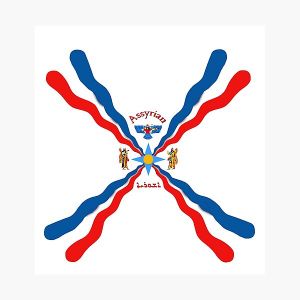Language/Assyrian-neo-aramaic/Vocabulary/Fruits
Hi Assyrian Neo-Aramaic learners! 😊
In this lesson, we will learn the Assyrian Neo-Aramaic names for different types of fruits. Learning the vocabulary for everyday objects like fruits is essential in mastering a language. You can improve your Assyrian Neo-Aramaic Vocabulary by using the Polyglot Club website. Find native speakers and ask them any questions!
Why Learn Assyrian Neo-Aramaic Fruits?[edit | edit source]
Learning the names of fruits may seem like a basic task, but it is an important one. If you travel to the Middle East or live in the region, knowing the names of fruits will be helpful in communicating and buying groceries. In addition, Assyrian Neo-Aramaic fruit names can be used as metaphors in literature and everyday conversations.
Vocabulary[edit | edit source]
The following table shows the Assyrian Neo-Aramaic, pronunciation and English translation for different fruits:
| Assyrian Neo-Aramaic | Pronunciation | English |
|---|---|---|
| Athuwa | aɪθuːwɑ | Apple |
| Hagga | hɑgːɑ | Pear |
| Chimsha | ʃimʃɑ | Orange |
| Laima | lɑimɑ | Lemon |
| Anbi | ɑmbi | Grapes |
| Tursha | tuːrʃɑ | Strawberry |
| Dora | doːrɑ | Peach |
| Khikhina | xi̯iːxi̯nɑ | Watermelon |
| Batixa | bɑtiχɑ | Plum |
| Ananas | ɑnɑnɑs | Pineapple |
| Foos-ha | fuːʃɑ | Raspberry |
| Zinjibil | zinʤibil | Ginger |
| Basma | bɑsmɑ | Guava |
Dialogue[edit | edit source]
Here is an example dialogue where we can see different fruits in context:
- Person 1: Hawrā zāyta? (Do you have olives?)
- Person 2: Lā, batīxī rāyīt khā whādan āt. (No, I saw only plums and bananas.)
Interesting Facts[edit | edit source]
Did you know that oranges were first grown in Southeast Asia and that the fruit was only called "orange" in the English language after the fruit became popular in Europe? Similarly, the word "lemon" comes from old French "limon," but in Assyrian Neo-Aramaic, it is "laima."
Conclusion[edit | edit source]
In this lesson, we have learned the names of different fruits in Assyrian Neo-Aramaic. You can use this vocabulary to help improve your language skills and understanding of Middle Eastern culture. Don't forget to practice by asking native speakers and trying the fruits yourself.
➡ If you have any questions, please ask them in the comments section below.
➡ Feel free to edit this wiki page if you think it can be improved. 😎
Sources[edit | edit source]
Having concluded this lesson, consider checking out these related pages: Months of the year & Days of the week.

